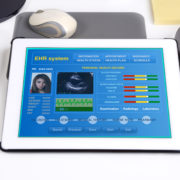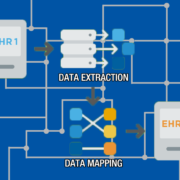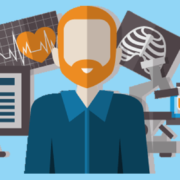A Close Look at Data Element Libraries and How They Can Support Interoperability
On June 21, 2018, the Centers for Medicare and Medicaid Services (CMS) made an announcement stating it had started using its very first Data Element Library (DEL). Serving as a CMS database, DEL facilitates the exchange of electronic health records. Even better is that the library is free to use and easily accessible to the public. Patients can simply log into the centralized resource and view various forms of information relating to their health.
With DEL in place, it is possible for electronic health record (EHR) vendors to utilize the database and incorporate a variety of health IT standards into their operations, which promotes a smooth exchange of patient information from one provider setting to the next.
There are numerous provider settings that are mandated by law to incorporate certain pieces of information into their EHRs, including nursing homes and other post-acute care centers like rehabilitation centers. Data elements that must be included in the EHRs are demographics, any health evaluations the patient has undergone, and any medical problems that have been identified.
In addition to serving as an advanced tool for EHR interoperability, the DEL features IT standards that make the collection of such healthcare information easier to gather. And by having these standards combined with the data elements in a centralized location, this makes it much simpler for health IT vendors to share pertinent information with one another.
When a patient is moved from one setting to another (from a rehab center to a nursing home), his or her EHRs can easily travel from the first setting to the next thanks to the DEL and it will be in a language that is understandable from one provider to the next; this enhances patient outcomes.
Seema Verma, a CMS Administrator recently made a statement, “We’re excited to add this important building block to the foundation for interoperability that CMS is helping to establish…The DEL supports the use and sharing of data, and aligns with MyHealthEData, a governmentwide effort strengthening the interoperability of health information…It also closely aligns with CMS’ Patients Over Paperwork initiative focused on reducing administrative burden and costs while improving care coordination, outcomes and patients’ ability to make decisions about their own care.”
DEL seeks to take data standardization to the next level and aims to advance interoperability. There are three primary benefits gained by using the DEL:
- A lower burden on providers
- Improved coordination of care
- Enhanced communication among healthcare providers
EHRs have been in place for several years now but still yet, not all providers are taking advantage of them to their full potentials. Thankfully, we are seeing more and more initiatives being put in place to help providers take full advantage of EHRs. Providers will do well to understand that using EHRs to their utmost potential is not solely a benefit from a compliance standard. Rather it greatly benefits the healthcare industry from a patient outcome standpoint too. The more EHRs are used and shared among providers, the better patient outcomes can be.
According to a health analyst in divisions of chronic and post-acute care at the Centers for Medicare & Medicaid Services, Tara McMullen, MPH, a lack of data harmonization is an enormous problem for CMS and providers. Thankfully, though, with DEL, it becomes possible for language standardization to be achieved across all provider settings. The DEL keeps everyone on the same page and ensures patients are receiving first-class health care services.











